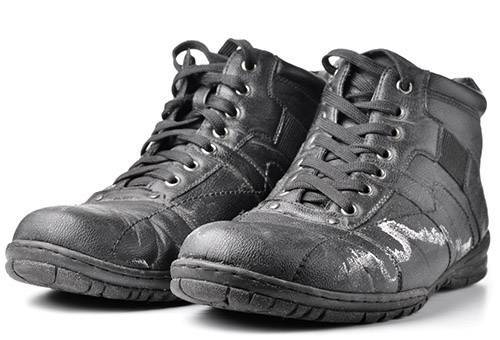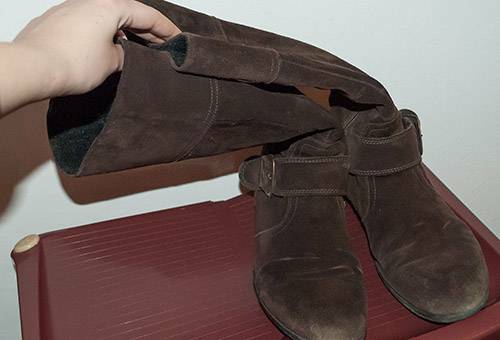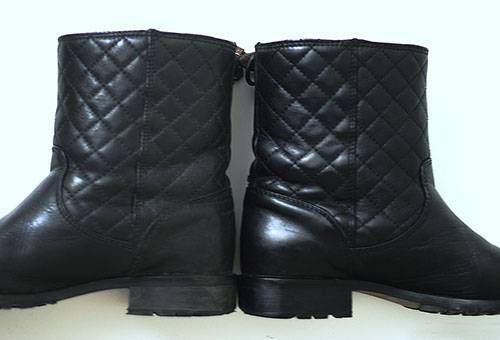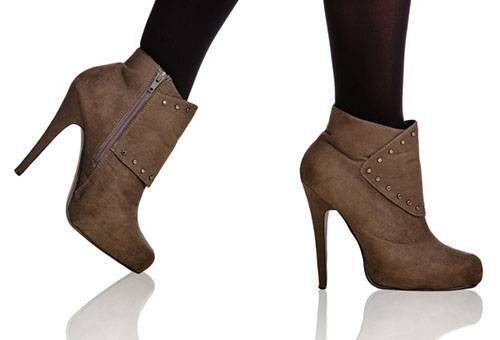Contents:
- Properties of reagents
- Protection of winter footwear
- How to save boots from leather?
- Rescue of footwear from suede and nubuck
Rescuing the population of cities from injuries and falls in the winter, cleaners generously sprinkle sidewalks with special means. Reagents corrode not only snow and ice, but also the surface of shoes. At best, the boots will be covered with white divorces, which can be washed. In the worst - shoes can not be saved. Water repellent is not able to provide reliable protection. Using the right methods, you can protect shoes from natural and artificial materials.

Properties of reagents
The favorite remedy for our wipers is sodium chloride with the addition of sand or other salts. This tool is the cheapest, and snow drifts and ice melt right before our eyes. It is not recommended to use it, because salts corrode car bodies, spoil asphalt, lead to corrosion of water pipes and corrode cultural monuments. What can we say about harm to animals and soil? Unlike the environment, shoes can be protected from the influence of chemicals.
The greatest concentration of salt is concentrated in snowdrifts and thawed snow on roadside roads. The most generous amount of reagents are poured out onto motor roads in order to avoid icing. A mixture of slush and chemical is pushed out by the wheels to the side. Crossing the road, try to walk along the pedestrian crossing, and on the sidewalk walk in the center, and not from the side.
Than fresh spots on the surface of shoes, the easier it is to clean them. When you come home, do not pull with the removal of salt from leather, suede or nubuck boots.

Protection of winter shoes
Antifreeze suffers from shoes made of any material other than rubber. Many believe that it is enough to process shoes with a water-repellent spray, and you are not afraid of reagents. This simple method does not give any guarantees, but enjoys good reviews. However, the boots should be treated at least 3 times, waiting until the previous layer is completely absorbed into the material.
One of the "grandmother's methods" to protect boots - smear them with a slice of lard or handle with beeswax. In our time there are more "pleasant" ways, the more pork fat can leave stubborn stains of fat on shoes. Impregnate leather boots recommend a special cream based on beeswax or mink fat. This should not be done before leaving home and dipping the boots into a mixture of snow and reagents, and at night, so that the oil is absorbed deeply into the fibers of the material.
It is better to put footwear from suede or nubuck in the closet to a drier and sunny weather, but if there is no choice, take care of its protection in advance. Oil and greasy creams stick the pile and leave fatty traces. The only available means is a spray with an oil content that repels water, and with it chemicals. The processing of the suede surface of boots should be done a few hours before leaving home.

How to save boots from the skin?
After a walk on a warm winter day you can find white stains on your favorite shoes. These are the consequences of the generosity of the wipers throwing the official salt to the right and to the left. Leather shoes should be wiped with a damp cloth, without waiting for the stains to dry up. Remains of water should be removed with a paper towel or a dry cloth.
You can clear the stains with:
- vinegar;
- of sunflower oil;
- castor oil;
- water-alcohol solution.
Mix vinegar with water in a ratio of 1: 2.Moisten cotton pad in the solution and work on the surface of the boots, without losing seams and joints. Instead of vinegar, you can use alcohol. He shows excellent results in removing divorces. After the treatment, wipe the shoes with a dry cloth to remove the remnants of the solution. Leave them to dry at room temperature. To remove stains with oil, moisten the cotton pad in it and grate the boots, paying special attention to the seams. After drying, treat the boots with cream and apply a soft cloth. If in some places it was not possible to clean the stains, paint them with a cream of the right color.
Advice
Never put leather shoes on the battery, it must dry at room temperature.

Rescue of shoe from suede and nubuck
Wait until the suede pair of boots has dried completely. After that, you need to remove stains with a special brush. If you did not manage to clean the stains, prepare a special shampoo. Add to the water a little liquid soap( the desired child) and a few drops of ammonia. Foam the solution and treat them with boots using a sponge. If the product does not show results, wipe the surface with a weak solution of vinegar.
If no remedy has helped to repair the damaged boots, hold them over the steam, evenly working on each side. After this, lift the pile with a suede or nubuck brush. To clean boots with a textile coating, use a solution of water and ammonia. But it is better to postpone such shoes to drier days.
Protection from technical salts is the best way to save your favorite boots. Avoid snowdrifts and "porridge" from dirt, chemicals and ice. Better go through the puddle, than by the side with the melted snow. In winter, it is better to wear two pairs of shoes in turn, so that they can dry out and be impregnated with protective agents. Do not forget that rubber galoshes returned to fashion. They are not afraid of snow or rain.
